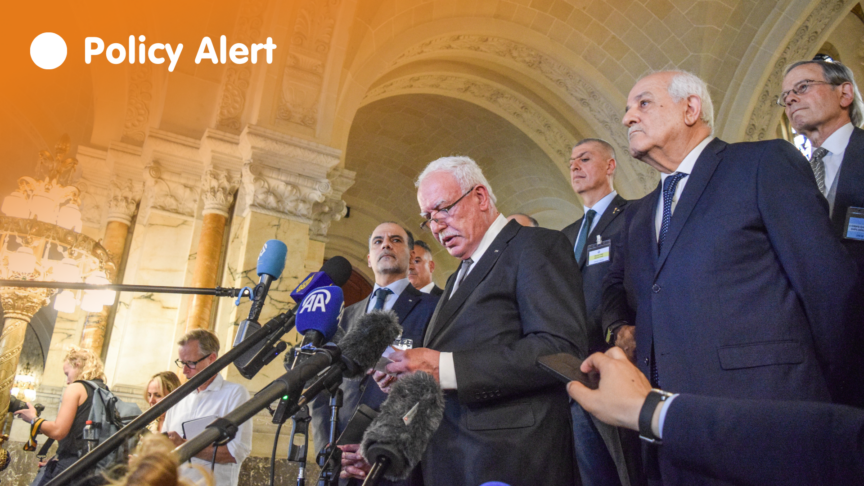The Inter-Korean Summit: Peace is not – yet – at hand
North Korea is not yet denuclearized. To get there, China will have to play significant role in the negotiations.
Just two months ago, a major conflict on the Korean peninsula seemed possible. Today, the situation has changed completely, and peace seems nearly at hand. The media frenzy is doing the rest.
For the second time in a month, Kim Jong-un has delivered an extraordinary performance. However, while China was in charge of the visuals during his visit to Beijing at the end of March, in Panmunjom the scene was carefully negotiated between the two sides.
The patriotic setting for the meeting (not only Mount Kumgang, but also the Dokdo Islands, disputed by South Korea and Japan), the menu (Kim joked about the noodles “delivered from Pyongyang”, riffing off the food aid often granted by the South) were all carefully calculated to influence South Korean public opinion.
President Moon Jae-in, ignored by North Korea for an entire year, earned a tremendous amount of political goodwill two months before legislative elections. Who could be against peace? North Koreans will have a harder time making up their minds however, as the summit was not publicized in the country right away, just as many aspects of Kim’s trip to China were not broadcast in North Korea.
A helping hand to the United States
Peace, the renunciation of all aggression and even denuclearization have all been the subject of several commitments made between the two Koreas since 2001. In fact, some of Kim Jong-un’s remarks were a repetition of previous commitments. For example, his promise (expressed jokingly) to no longer disturb the South with morning missile launches had already been made by his father, Kim Jong-il, to President Roh Moo-hyun in 2007.
So, to properly evaluate the progress made at the 2018 summit one must focus on concrete details, such as the commitment both sides made to avoid incidents in the Yellow Sea and South Korea’s promise to end propaganda broadcast by loud-speakers in the demilitarized zone.
In addition, President Moon affirmed the positive nature of the proposal for denuclearization in the North, despite the fact that it is mostly content-free so far.
Nothing is irreversible in this ‘historical’ statement, but certain elements stand out. The declaration includes a desire to put into practice “all previous agreements and commitments”, which at least recognizes their existence and admits that they are not obsolete. It promises a three-way dialogue with the United States; or maybe four-way, including China. Kim Jong-un reiterated the idea of dialogue with the United States just a month after his visit to Beijing, which speaks volumes about his real distance from China. Here, his hand is directly and audaciously extended to Donald Trump.
China remains influential
Not all of Donald Trump's tweets are impulsive. A few minutes after the publication of the inter-Korean declaration, the US president asked that we “do not forget the great help that my good friend, President Xi of China, has given to the United States, particularly at the Border of North Korea“. If there is to be a signed peace deal before the end of the year, as the declaration implies, the parties will have to reckon with China, which, along with North Korea, is a signatory of the 1953 Armistice Agreement (South Korea is not).
The declaration has the merit of reducing the risk of local incidents between the two Koreas, but it does not solve the essential problem. If Donald Trump immediately referred to the role of China, it is because the search for stability takes precedence over a purely declarative peace. Clearly, this stability will require verified denuclearization – anything else is simply ancillary to the solution. The continuation of China's contribution to international sanctions is indispensable. The long-awaited tightening of sanctions by China was undoubtedly the element that has brought Kim Jong-un back to the negotiating table.
Moratorium
So, the game is only just beginning. The North Korean commitment to stop nuclear testing and missile launches is still a moratorium under another name. Previous experience has shown that phased agreements have failed fairly quickly. This is what Kim Jong-un is proposing for the moment, but the United States wants a tangible result in the immediate wake of the Trump-Kim meeting. In other words, the verified dismantling of warheads or missiles.
Beyond providing some form of relief for many South Koreans, understandably so given the likelihood of armed conflict over the past year, North Korea will have to demonstrate in practice its commitment to denuclearization. Admittedly, the international effort to make this happen will have to be enormous. The dismantling of a nuclear and ballistic force in place is a serious operation, and North Korea will undoubtedly need to receive significant economic benefits for its renunciation of those weapons. Yet, given the false solutions that have been negotiated since 1991, it is up to the Kim regime to take the first concrete steps.
This article was originally published in French by Le Monde on April 28th, 2018.
The European Council on Foreign Relations does not take collective positions. ECFR publications only represent the views of their individual authors.


